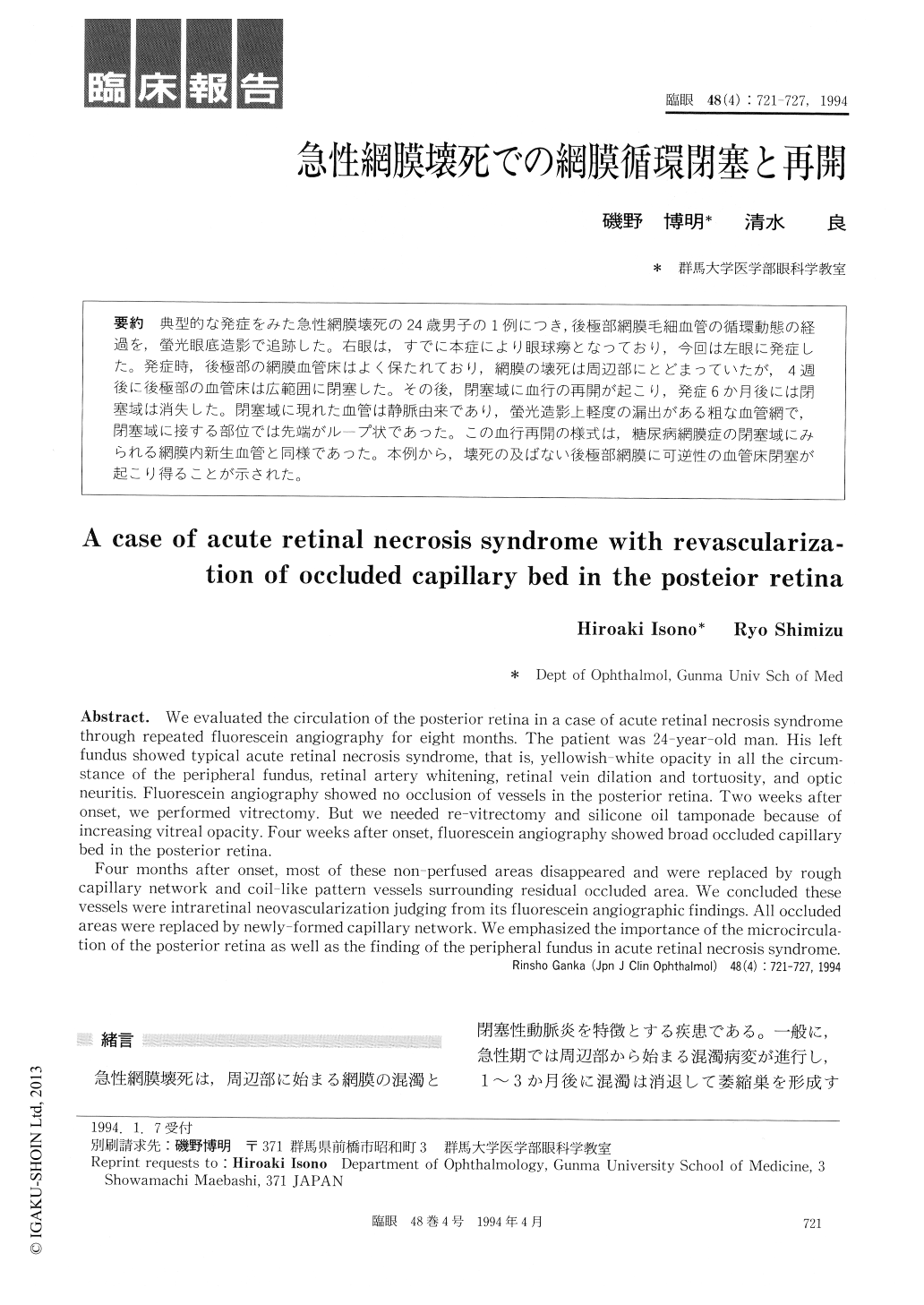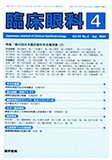Japanese
English
- 有料閲覧
- Abstract 文献概要
- 1ページ目 Look Inside
典型的な発症をみた急性網膜壊死の24歳男子の1例につき,後極部網膜毛細血管の循環動態の経過を,螢光眼底造影で追跡した。右眼は,すでに本症により眼球癆となっており,今回は左眼に発症した。発症時,後極部の網膜血管床はよく保たれており,網膜の壊死は周辺部にとどまっていたが,4週後に後極部の血管床は広範囲に閉塞した。その後,閉塞域に血行の再開が起こり,発症6か月後には閉塞域は消失した。閉塞域に現れた血管は静脈由来であり,螢光造影上軽度の漏出がある粗な血管網で,閉塞域に接する部位では先端がループ状であった。この血行再開の様式は,糖尿病網膜症の閉塞域にみられる網膜内新生血管と同様であった。本例から,壊死の及ばない後極部網膜に可逆性の血管床閉塞が起こり得ることが示された。
We evaluated the circulation of the posterior retina in a case of acute retinal necrosis syndrome through repeated fluorescein angiography for eight months. The patient was 24-year-old man. His left fundus showed typical acute retinal necrosis syndrome, that is, yellowish-white opacity in all the circum-stance of the peripheral fundus, retinal artery whitening, retinal vein dilation and tortuosity, and optic neuritis. Fluorescein angiography showed no occlusion of vessels in the posterior retina. Two weeks after onset, we performed vitrectomy. But we needed re-vitrectomy and silicone oil tamponade because of increasing vitreal opacity. Four weeks after onset, fluorescein angiography showed broad occluded capillary bed in the posterior retina.
Four months after onset, most of these non-perfused areas disappeared and were replaced by rough capillary network and coil-like pattern vessels surrounding residual occluded area. We concluded these vessels were intraretinal neovascularization judging from its fluorescein angiographic findings. All occluded areas were replaced by newly-formed capillary network. We emphasized the importance of the microcircula-tion of the posterior retina as well as the finding of the peripheral fundus in acute retinal necrosis syndrome.

Copyright © 1994, Igaku-Shoin Ltd. All rights reserved.


